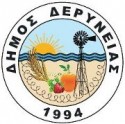Today, the Commission, in cooperation with the President of the European Council, has put forward a European roadmap to phase-out the containment measures due to the coronavirus outbreak.
While we are still in firefighting mode, the necessary extraordinary measures taken by Member States and the EU are working. They have slowed down the spread of the virus and saved thousands of lives. However, these measures and the corresponding uncertainty come at a dramatic cost to people, society and the economy, and cannot last indefinitely.
President of the European Commission Ursula von der Leyen said: “Saving lives and protecting Europeans from the coronavirus is our number one priority. At the same time, it is time to look ahead and to focus on protecting livelihoods. Even though conditions in the Member States still vary widely, all Europeans rightly ask themselves when and in what order the confinement measures can be lifted. Responsible planning on the ground, wisely balancing the interests of protection of public health with those of the functioning of our societies, needs a solid foundation. That’s why the Commission has drawn up a catalogue of guidelines, criteria and measures that provide a basis for thoughtful action. The strength of Europe lies in its social and economic balance. Together we learn from each other and help our European Union out of this crisis.”
Commissioner for Health and Food safety Stella Kyriakides said: “Returning to normality after the corona lockdowns will require a carefully coordinated and European approach between Member States, based on science and in the spirit of solidarity. It is crucial that our healthcare systems have the capacity to treat increases in new cases, that essential medicines and equipment are available and that we have large-scale testing and tracing capacity in place. We know that this road will be long and gradual and that the consequences of this unprecedented health crisis will be long lasting. Until effective treatments and a vaccine are found, we will have to learn to live with this virus. But Europe will be back on its feet, together and united. This is the only way.”
While recognising the specificities of each country, the European roadmap establishes the following key principles:
- Timing is essential. Deciding that the time has cometo begin to relax confinement should be based on these criteria:
o Epidemiological criteria showing that the spread of the disease has significantly decreased and stabilised for a sustained period.
o Sufficient health system capacity, for example taking into account the occupation rate for intensive care units, the availability of health care workers and medical material.
o Appropriate monitoring capacity, including large-scale testing capacity to quickly detect and isolate infected individuals, as well as tracking and tracing capacity.
- We need a European approach. While timing and modalities for lifting containment measures differ between Member States, we need a common framework that is based on:
o Science with public health at its centre, while acknowledging that ending restrictive measures involves balancing public health benefits with social and economic impacts.
o Coordination between Member States, to avoid negative effects. This is a matter of common European interest.
o Respect and solidarity. This is essential for both health and socio-economic aspects. At a minimum, Member States should notify each other and the Commission in due time before they lift measures and take into account their views.
- Phasing-out confinement requires accompanying measures, including:
o Gathering harmonised data and developing a robust system of reporting and contact tracing, including with digital tools that fully respect data privacy;
o Expanding testing capacity and harmonising testing methodologies. The Commission – in consultation with the European Centre for Disease Prevention and Control – has adopted Guidelines today on different coronavirus tests and their performance;
o Increasing the capacity and resilience of national health care systems, in particular to address the predicted rise in infections after lifting restrictive measures;
o Continuing to reinforce medical and personal protective equipment capacities.
o Developing safe and effective treatments and medicines, as well as developing and fast-tracking the introduction of a vaccine to put an end to the coronavirus.
NEXT STEPS
The Commission’s roadmap lists concrete recommendations Member States should consider when planning to lift containment measures:
- Actions should be gradual: measures should be lifted in different steps, with sufficient time left between them to measure the impact.
- General measures should progressively be replaced by targeted ones. For example, protecting the most vulnerable groups for longer; facilitating the gradual return of necessary economic activities; intensifying regular cleaning and disinfection of transport hubs, shops and workplaces; replacing general states of emergencies with targeted government interventions to ensure transparency and democratic accountability.
- Internal border controls should be lifted in a coordinated manner. Travel restrictions and border controls should be removed once the border regions’ epidemiological situation converges sufficiently. External border should be reopened in a second stage and take account of the spread of the virus outside the EU.
- The re-start of economic activity should be phased-in: there are several models that can be implemented, e.g. jobs suitable for teleworking, economic importance, shifts of workers, etc. The entire population should not return to the workplace at the same time.
- Gatherings of people should be progressively permitted, taking into account the specificities of different categories of activity, such as:
- Schools and universities;
- Commercial activity (retail) with possible gradation;
- Social activity measures (restaurants, cafes) with possible gradation;
- Mass gatherings
- Efforts to prevent the spread of the virus should be sustained, with awareness campaigns to encourage the population to keep up the strong hygiene practices and social distancing.
- Action should be continuously monitored and preparedness developed for returning to stricter containment measures as necessary.
While confinement measures are gradually lifted, there is a need to strategically plan the recovery, revitalising the economy and getting back on a path of sustainable growth. This includes enabling the twin transition towards a greener and digital society, and drawing all lessons from the current crisis for the EU’s preparedness and resilience. The Commission will develop a Recovery plan, based on a revamped proposal for the next long-term EU budget (Multiannual Financial Framework) and the updated Commission Work Programme for 2020.
BACKGROUND
The Commission, in cooperation with the President of the European Council, has developed the present roadmap responding to the call of the European Council of 26 Marchfor a coordinated exit strategy. It takes into account the expertise of the European Centre for Disease Prevention and Control (ECDC) and the panel of scientific experts advising the Commission on the coronavirus. Evidently, any such reflection is based on the scientific knowledge available today, and should be revised as further evidence appears and measuring methods are harmonised.
In parallel, the Commission continues to mobilise funding to foster research on the development of vaccine, treatments and medicines. The Commission is also working with the European Medicines Agency to streamline regulatory steps, from clinical trials to marketing authorisations. It will also foster international cooperation as a priority.
Furthermore, to help Member States acquire the necessary equipment as rapidly as possible, including tests, the Commission has set up a ‘Clearing house for medical equipment’, launched joint procurement actions and emergency stockpiling via RescEU and proposed to support national health systems with the Emergency Support Instrument.
MORE INFORMATION
Factsheet: A Joint European Roadmap towards lifting coronavirus containment measures
Website on the Commission’s coronavirus response
Press contact
· Eric MAMER
Phone
+32 2 299 40 73
· Dana SPINANT
Phone
+32 2 299 01 50





